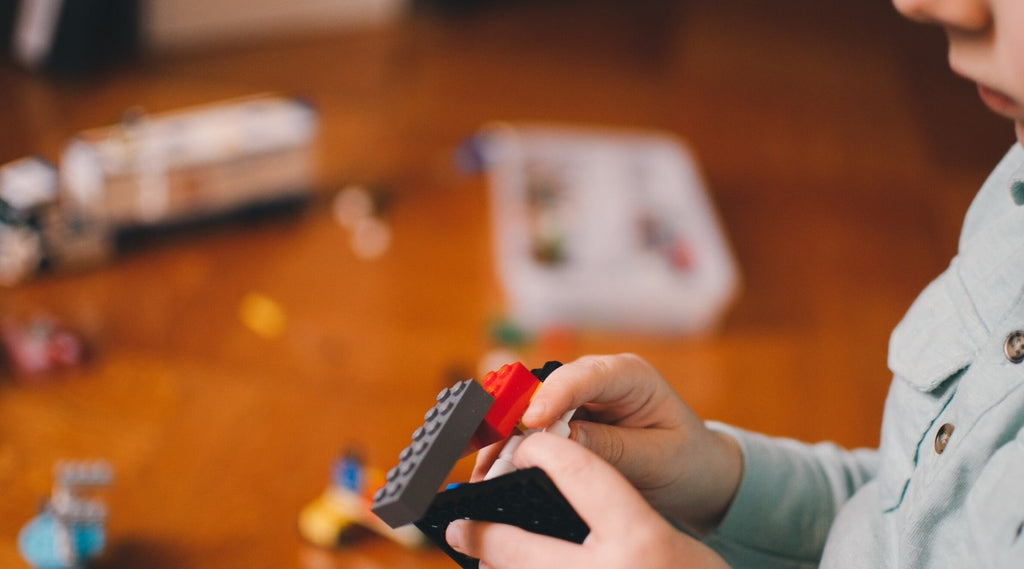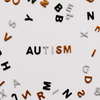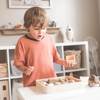Home Together: Navigating COVID-19 and Disrupted Routines With Your ASD Child

For families with a child on the autism spectrum, these times can be uniquely concerning. Disruption to autism spectrum disorder (ASD) kids’ structure and routine can be deeply unsettling, triggering behavioral changes and making the new normal all the more challenging for themselves and their families around them.
But while this unprecedented time brings its own set of trials, it also offers families with ASD children new opportunities—especially to simplify our routines, reconnect with our loved ones, and deepen our bonds. To make the most of these opportunities, families with ASD children should establish new, manageable routines that facilitate structure, healthy functioning, learning, and crucially—fun.
Here are some tips for helping parents navigate the change successfully.
1. Find comfort in keeping your current activities
During these times, adhering to a routine that works for parents and kids alike is essential and mutually beneficial. Try to keep your child’s previous routine as much as possible, as this will help your child manage changes in this new reality. Visual tools like colorful charts filled out with the day’s schedule can be vital in reinforcing a sense of control.
Charts will help your child “see” the time to:
- Wake up
- Eat breakfast
- Brush teeth
- Get dressed
- Do our chores
- Play and move our bodies
- Eat lunch
- Quiet time
- Play and move with mom or dad
- Visit a friend (virtually)
- Eat dinner
- Take a bath
- Brush teeth
- Bedtime reading
- Go to sleep
Children with ASD are likely to respond positively to the certainty this creates, and it will help them understand at what points of the day they can expect to learn and play, and at what points their parents will be focusing on other matters such as work.
2. Create new spaces and routines
There’s no denying that these are challenging times—and that will mean new routines and structures. Giving your child a “new” activity can empower him/her to learn a new skill and find comfort in it.
Some ideas for “new” activities:
- Feed the dog/cat
- Put the silverware on the table before meals
- Laundry “match the socks”
- Draw or color “picture of the day”
- Bounce a ball back and forth outside
- Draw a picture with sidewalk chalk
- Find all the “blue” (or red or yellow) things on a walk around the block
This will require creative thinking and perhaps some trial-and-error, but this is where you’ll create new activities, new memories, and provide your child with autism valuable opportunities to learn, grow, and develop new skills.
3. “We’re being flexible”
Sheltering at home is enough to make anyone go stir-crazy, which is why it’s all the more important to celebrate you and your child’s success in navigating changes.
Some ideas for celebrating success:
- “Visit” a friend or a family member virtually. Seeing this important person can be really encouraging for your child.
- Have a virtual meal with your child’s friend or family member. Allow your child to even set the silverware in front of the screen for his/her guest.
- Point out to your child and thank him/her when he/she is being “flexible.” Your praise is such positive reinforcement for him/her!
- Allow your child choices when you can. If he/she can choose the book or the video or the “I-Spy” color, it helps to engage him/her in new activities.
Your child will learn that even amid major change, there can be comfort and joy. For families with autism—and for everyone else making their way through the age of coronavirus—that’s a lesson well-worth learning.
If you found this article helpful, please consider sharing it on social media or linking to it from your website to help other parents. You may also want to check out our other resources on coping strategies for autism and COVID-19.
*This blog post was written by Colleen Kraft and originally appeared on Autism Parenting Magazine.




